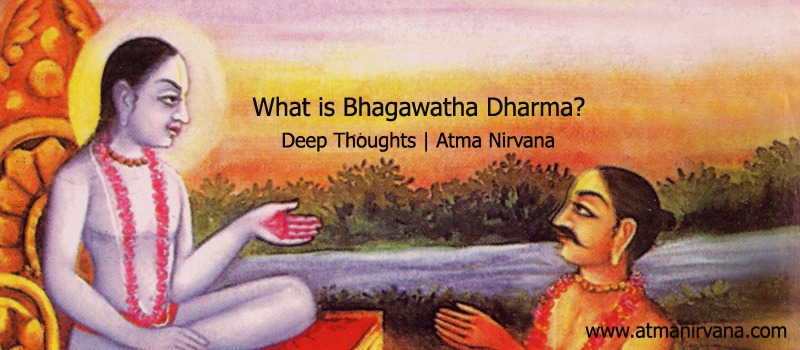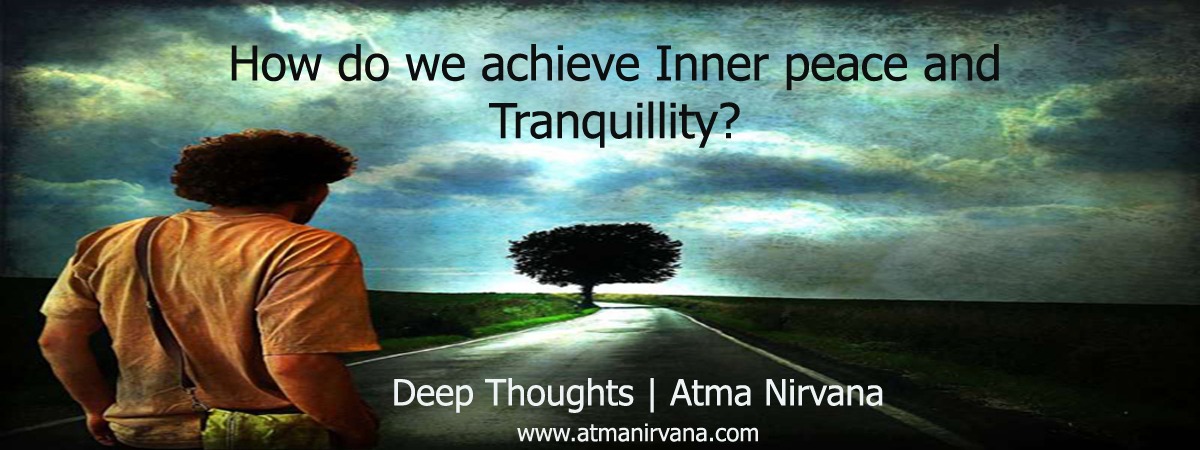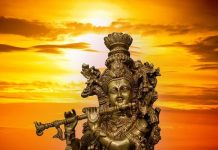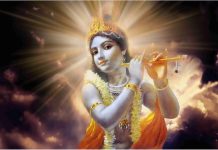The Purpose of Life’s Journey – II, What is Bhagavata Dharma?
In the last write-up we had discussed the sequence following a question posed by Vasudeva, father of Lord Krishna, to Narada Muni. The question was: What is Bhagavata Dharma?
Narada Muni in turn recalled that the same question on Bhagavata Dharma was posed by Nimi Chakravarthy to Navayogis. (Please refer the 1st article titled The Purpose of Life Part I)
Kavi yogi, the first of the Navayogis, tells Nimi Chakravarthy that Bhagavata Dharma is nothing but leading one’s life, actions, and thoughts towards the Supreme. Bhagavata Dharma helps one to destroy duality of I and you.
One should realise that the purpose of life is to lead the soul in peace and bliss towards the Supreme. The walls of duality, where one distinguishes between the self and the Supreme, get broken down through Bhagavata Dharma.
How do we achieve this inner peace and tranquillity? First, you must ask yourselves: Do you need inner peace and tranquillity? Inner peace cannot be achieved so far as you are immersed in the materialistic world.
You may also argue that you get happiness through many means: having a good burger, watching a good movie, going out with friends, amassing wealth, having a drink or spending time with the opposite sex.
Well yes. But the difference between this happiness and spiritual happiness is that one is transient and temporary, the other is permanent; one is part of life, the other is the way of life.
We cannot freeze materialistic happiness. We can, at best repeat it for some time. In short, worldly happiness is when we fall in love with the materialistic world; spiritual happiness is when we realise the purpose of life and make bliss part of live and our living process.
Kavi yogi says that our words, thoughts and actions are all soaked in the materialistic world. He admits that it is difficult to detach ourselves from this world. This is because we constantly pursue this type of happiness.
But, through Bhagavata Dharma, we would be able to remove our words, thoughts and actions from the materialistic world and thereby liberate ourselves from sorrow and fear. This would lead us to tranquillity wherein we are at peace with ourselves and the world around us. The question is how do we remove our words, thoughts and actions from our materialistic world. Just think of three questions:
The question is how do we remove our words, thoughts and actions from our materialistic world. Just think of three questions:
Where did we come from?
Why are we here?
Where do we go from here?
Spiritual thinker Rajneesh Osho has said that we are actually travellers who visit earth and leave to another world.
If we come to terms with this journey, we may be able to detach ourselves from the materialistic world. If we think of these three questions, we will realise how insignificant we are and how our knowledge is blinded. Once we realise this, wisdom will dawn on us. Till then, we will be like a blind man on a rough pot-holed road not knowing where the dangers are. Once wisdom dawns on us, then a person will be able to dedicate all his actions, body, mind and thought to the Supreme. That will be the beginning of the end of fear; that will also be the dawn of `advaitha bodha’ or the end of duality.
Once wisdom dawns on us, then a person will be able to dedicate all his actions, body, mind and thought to the Supreme. That will be the beginning of the end of fear; that will also be the dawn of `advaitha bodha’ or the end of duality.
I admit it is a bit difficult to follow this in the present world. One simple way out: We should be able to dedicate a few seconds before we do anything and use this time to tell ourselves that all that we are doing is for the Supreme Being. This will help calm us, remove fear and be at peace with ourselves.
For example, you get angry at someone, or something or get upset, try this out. Before yelling at the person, or losing your cool, tell yourself that this is a materialistic action, and a sign of duality. Does your action fulfill the criteria that what you are doing is for the Supreme? Obviously, not. So calm your mind.
That does not mean that you cannot get angry or explode or upset. The difference is that you are in control of yourself and the anger can be directed positively to teach someone a lesson. Yogis and great men have practiced what is called `calmness of anger.’ This may sound a bit contradictory. How can one be calm in anger? It is possible.
I shall give an example:
Sisupala was a king and close friend of Rukmi, the brother of Rukmani. Rukmi had promised Sisupala the hand of his sister Rukmani. But when Rukmani eloped with Krishna, Sisupala becomes livid.
At the Rajasuya yagna conducted by the Pandavas, Dhritharashtra invites Sisupala who does not realise that Krishna was the guest of honour.
When Sisupala enters the hall, he sees Krishna occupying the high seat of honour. At this Sisupala get wild and yells openly and says the following even as all the slack-jawed invitees watch aghast:
Whom are you honouring? This person who wears the Peethambara (yellow dress)? Who has a peacock feather on his head? Who wears gold and colourful stones as ornaments? The One who is surrounded by Gopis?
Now, the same words are said by the Gopis to describe Krishna, but in a totally different tone, filled with love and admiration.
I agree that what the Gopis said is NOT controlled anger. But my point of argument is that there could be calmness in anger or you could practice controlled anger.
The ability to control anger, the ability to control negative thoughts and turn them to positive action is a true sign of a realised soul. It is said that the brave is not one who conquers others, but oneself.
In modern management, people are told to count 1 to 10 when you get angry. This is a similar method to calm yourself down. Instead of counting 1 to 10, you could also take 5 deep breaths or chant the name of the Supreme. This brings me to the means to achieve Bhagavata Dharma. Kavi yogi says that Bhagawatha Dharma can be achieved through Bhakthi which leads to purity of the inner self and the destruction of duality. He also says that if one realises the omnipresence of the Supreme the path towards Bhagawatha Dharma becomes extremely clear.
This brings me to the means to achieve Bhagavata Dharma. Kavi yogi says that Bhagawatha Dharma can be achieved through Bhakthi which leads to purity of the inner self and the destruction of duality. He also says that if one realises the omnipresence of the Supreme the path towards Bhagawatha Dharma becomes extremely clear.
Following this, Nimi Chakravathy asks the second question: What are the signs of a person who has realised Bhagavata Dharma.
I shall deal with this in the next column…
Hari Om


























































